by ejceasar

Myth and Mythologies. Myths can be classified as origin myths, cultural myths and political myths and mythology is a collection of myths belong to a time period, region or religion
A flood myth also known as deluge myth is a narrative in which great flood, usually sent by a deity or deities to destroy civilizations as an act of divine retribution. Flood myths are common across a wide range of cultures, extending back to Bronze Age and Neolithic prehistory.
Every mythology has its own version of creation myths, or other wise commonly known as how the world came in to existence. In Egyptian Mythology, the creation myth starts with an egg in the ocean. There was a single egg floating in the ocean and the egg hatched and the son of Ra was born. According to the Indian Mythology, the universe was created by Lord Brahma out of himself.
The idea of an unimaginable war that threatens to tear apart the cosmos connects with us so deeply that it still powers our epic stories. The Lord of the Rings, Avengers, Hobbits, and countless others all feature this age-old trope. It can be found in the legends of almost every ancient culture.
We all know the myth of Atlantis: a utopian city wiped out in a single night thanks to an unearthly cataclysm. But Atlantis is only the most famous of mythical lost cities. Near-identical stories crop up with such regularity that it’s tempting to think they must be somehow related.Take Iram (also known as Ubar). A fabled city in the deserts of modern Saudi Arabia, Iram is said to have been wiped out in a single night when Allah buried it under a flood of sand. In other words, it’s the Atlantis myth translated to a world without water. Then you have Ys off the coast of France, which was supposedly flooded around the 5th century by a mythical warrior king. And that’s before we get onto the story of Sodom and Gomorrah and the Hindu myth of Tripura, which both involve gods wiping out immoral cities in a rain of fire.In short, the idea of a city obliterated overnight is so powerful it seems to show up everywhere. Are these half-remembered tragedies with some basis in fact (like Pompeii) or just stories that play to the apocalyptic fantasist in all of us? We’ll leave it to you to decide.
Jesus’s resurrection is the big selling point of Christianity, a unique moment that established Christ as the one true savior. At least that’s the idea. In reality, the idea of a dying deity or important human who is later resurrected has been around for millennia.Most famously, this includes the story of Osiris, the ancient Egyptian god whose birth was heralded by a star, who was betrayed by a friend, was murdered, and was later resurrected. But there are less explicit versions too. The Greek cult of Dionysus had their figurehead killed off every two years, only to rise again at a later date. Persephone also died regularly, and many pagan traditions from Scandinavia to Central America involved gods dying and returning to life or men dying and coming back as deities.Perhaps most interestingly of all, a historical tablet known as “Gabriel’s Revelation” allegedly tells the story of a Jewish rebel known as Simon who was killed by the Romans, only to be resurrected three days later. The catch? It was written in 4 BC, over 30 years before Jesus allegedly pulled off the same trick. Either it’s a mistranslation, or the Son of God was building on centuries of groundwork by other deities.
Dragons are likely the most traveled creature in all of mythology. Even more than vampires, they have a habit of turning up in societies and cultures so far apart in time and space you’d think it was impossible. There are ancient Sumerian tablets that record the act of dragon-slaying, Greek tales of dragons cavorting with other monsters, and an entire science built around the uses of their bones in China. In Central America, the Mayans worshipped the feathered snake Quetzalcóatl, while both Norse and Christian mythologies specifically mention dragons.As late as 1886, Victorian scientists still held that dragons had once existed but had gone extinct. Not until dinosaurs became firmly established in the public mind did people see the probable link between ancient fossils and dragon myths. Currently, our best guess is that various cultures all stumbled over dino bones at some point and translated them into gigantic mythological beasts.
Thanks to the occasional self-indulgent movie adaptation, most of us probably have a vague knowledge of the poems of Homer. Considered the earliest examples of Western literature, his Iliad and Odyssey are epic myths of tortured heroes fighting their way across oceans and continents in search of metaphorical salvation—and they appear in near-identical form in almost every culture.It’s called the “hero’s journey,” and just about all epic stories throughout history have followed the specific model. Famously, George Lucas deliberately based the first Star Wars on it, and you can find its influence in The Lord of the Rings, the Oz books, and even Harry Potter. But this archetypal myth was around even before fancy-pants anthropologists handed it over to lazy scriptwriters.The Sumerian Epic of Gilgamesh, the story of Sinbad the Sailor in the 1,001 Nights, the legend of King Arthur, the tale of the Argonauts . . . all of these and plenty more fit the structure of the hero’s journey just like Homer’s awesome poems above. In fact, nearly every single culture in recorded history has myths that fall into this category. Even Moses’s epic wanderings in the Bible fit this model. We as a species truly are lazy storytellers.
Cultural myths don’t just entertain us and record historical events. They also serve to explain why the world is the way it is. Hence the prevalence of stories designed to give a reason for some mystery of existence.In the Bible, we have the Tower of Babel, which explains why we have different languages. God’s speech prior to expelling Adam and Eve from Eden is another example, giving a reason for both the agony of childbirth and why ancient man had to toil all day in the fields. Wander across traditions into the stories of the Ancient Greeks and the legend of Prometheus demonstrates why fire is so valuable, while the story of Pandora gives a reason for the existence of disease and suffering.Start looking for them and you’ll find these explanatory myths scattered across every culture in history. There are myths that explain why rhinoceroses have no hairs, why incest is forbidden, and how medicine came into existence. Anything you can think of has some poetic explanation somewhere. In an unscientific age, poetry was often all we had.
Everything that begins has an end, and our ancient ancestors knew that as simply as we do. No surprise then that most cultures carry an End of Times myth to counter their creation story—a sort of consolation prize for those who won’t live to see the actual end (i.e. everyone).For Christians, this apocalypse is a gigantic epic that plays out over many, many years and involves so many disasters, wars, and calamities that it’s hard to keep track. Same with the Norse Ragnarok, which is a collection of disasters and battles that results in the Earth being drowned and recreated afresh. In Hinduism, it’s another epic battle followed by a rebooted universe, while Buddhism annihilates the world in a pyrotechnic fireworks display so amazing it deserves its own Michael Bay film.In other words, most humans throughout history have lived with their own personal vision of the end of everything, one that makes sense in the context of their lives and cultures. And that’s all these myths really are: ways for us humans to make sense of the world we live in, no matter when or where we are. It’s just an added bonus that some of them make absolutely awesome stories, too.
Learn a few fun facts
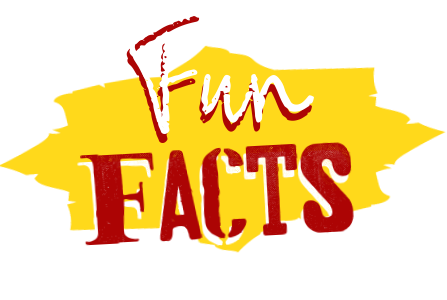
The red clothes worn by Hindu brides are associated with "scarlet women" in Christianity
The white clothes that represent virginity and purity in the Christian mythosphere are associated with spirituality and otherworldliness in the Hindu mythosphere; are restricted to monks, priests, and widows; and do not form part of household rituals.
The goat, the symbol of virility that is sacrificed to the Hindu Goddess, is the symbol of the devil in the biblical worldview.
The yoginis of Hinduism, who are handmaidens of the Goddess and are wild erotic creatures, recall the witches coven of the Christian mythosphere.
The pentagram is the symbol of Lakshmi, Hindu goddess of wealth, and Shukra, guru of demons, and is associated with Venus, wealth, fertility, creativity, and erotic power in Hindu astrology, but is considered the mark of the devil in Christianity.
'described in Western literature as the "dark drinker of blood" and is associated with witchcraft.
The serpent, which is associated with earth's fertility and occult wisdom in Hinduism, is considered a manifestation of the devil in biblical traditions.
To the Western eye the swastika is the symbol of Hitler and the Holocaust. To Hindus it is associated with auspiciousness and fertility.
Demon in Judeo-Christian-Islamic Paradigm is Evil being who opposes God but in Hindu Paradigm Demon is a Being who lives under-ground in bejeweled cities, fights gods, and possess the secret of rejuvenation
Gods in Judeo-Christian-Islamic Paradigm False deities worshipped by nonbelievers and pagans whereas in Hindu Paradigm Celestial beings who live above ground or in the skies, fight demons, and have consumed the elixir of immortality
Seven gods who decree: An, Enlil, Enki, Ninhursag, Nanna, Utu, and Inanna.
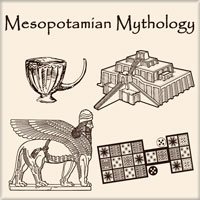
Mesopotamian Religion
Mesopotamian religion refers to the religious beliefs and practices of the civilizations of ancient Mesopotamia, particularly Sumer, Akkad, Assyria and Babylonia between circa 3500 BC and 400 AD, after which they largely gave way to Syriac Christianity.
Some of the most famous myths of Mesopotamian mythology include the creation myth Enuma Elish, the epic of Gilgamesh, and the story of Inanna's descent to the underworld. Enuma Elish describes the creation of the world and the gods by the god Marduk, while the epic of Gilgamesh tells the story of a king's quest for immortality. The story of Inanna's descent to the underworld tells of the goddess's journey to the land of the dead and her eventual return to the world of the living. Other notable myths include the story of the god Enki and the goddess Ninhursag, the myth of Ishtar's descent to the underworld, and the story of the god Dumuzid and his sister Geshtinanna.
The Epic of Gilgamesh
The Epic of Gilgamesh is one of the most famous and important works of ancient Mesopotamian literature. It is an epic poem that tells the story of Gilgamesh, the king of Uruk, and his quest for immortality. The poem is thought to have been written around 2100 BCE, in the Sumerian language, but it was later translated into Akkadian.
The epic tells the story of Gilgamesh's adventures, including his friendship with the wild man Enkidu and their journey to the Cedar Forest to fight the monster Humbaba. After Enkidu's death, Gilgamesh becomes obsessed with the fear of his own mortality and sets out on a journey to find the secret of immortality. He eventually meets Utnapishtim, the only human who has been granted immortality by the gods, and learns the secret of eternal life but fails to achieve it.
The epic also explores themes of friendship, loss, and the human condition, and it is considered one of the earliest known works of literature in world history. The poem was widely read in ancient Mesopotamia and had a significant influence on later literature in the region. The epic of Gilgamesh is still widely read and studied today, both for its historical and literary significance.
The Greek gods live in a cloud palace on Mount Olympus
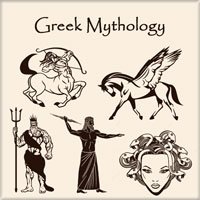
Greek mythology is the body of myths and teachings that belong to the ancient Greeks, concerning their gods and heroes, the nature of the world, and the origins and significance of their own cult and ritual practices.
Famous Myths of Greek Mythology
-
The myth of the Titans
The Titans were the gods that preceded the Olympians, they were the children of the primordial deities Uranus and Gaia. The Titans were overthrown by Zeus and the Olympians in a ten-year war called the Titanomachy.
-
The myth of the Olympians
The Olympians were the principal gods of the Greek pantheon, who lived on Mount Olympus. The most famous Olympians were Zeus, Hera, Poseidon, Demeter, Athena, Apollo, Artemis, Ares, Aphrodite, Hephaestus, Hermes, Dionysus, and Hestia.
-
The myth of the Minotaur
The Minotaur was a creature with the body of a man and the head of a bull, that was kept in the Labyrinth, a maze built by Daedalus for King Minos of Crete. The Minotaur was eventually killed by the Athenian hero Theseus.
-
The myth of the Labors of Hercules
Hercules, also known as Heracles, was a demigod who performed twelve impossible tasks, known as the Labors of Hercules, as atonement for killing his family. These tasks included slaying the Nemean Lion, capturing the Erymanthian Boar, and cleaning the Augean Stables.
-
The myth of the Argonauts
The Argonauts were a band of heroes who sailed with Jason on the ship Argo to retrieve the Golden Fleece, which was guarded by a dragon. The Argonauts included heroes such as Heracles, Orpheus, and Castor and Pollux.
-
The myth of the Trojan War
The Trojan War was a legendary war fought between the city of Troy and the Greeks. It was said to have been sparked by the abduction of Helen, the wife of King Menelaus of Sparta, by the Trojan prince Paris.
Greek Mythology Heritage Tree
This heritage tree represents some of the key figures in Greek mythology, particularly the Olympian gods and their ancestors.
- Titan Cronus
- Zeus
- Athena
- Apollo
- Artemis
- Hermes
- Persephone (with Demeter)
- Dionysus
- Hera
- Hephaestus
- Ares
- Hebe
- Poseidon
- Triton
- Polyphemus
- Hades
- Zeus
Zulu mythology contains numerous deities commonly associated with animals
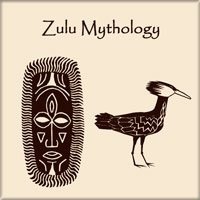
Zulu mythology contains numerous deities commonly associated with animals or general classes of natural phenomena. Unkulunkulu is the highest God and is the creator of humanity The Zulu people are an ethnic group that live primarily in South Africa, and their mythology is deeply rooted in their culture and tradition. Here are a few examples of famous myths from Zulu mythology:
The story of Unkulunkulu
Unkulunkulu is the creator god in Zulu mythology and is believed to be the first ancestor of the Zulu people. He is often depicted as an old man with a white beard, and is associated with wisdom, justice, and the sky.
The story of Nomkhubulwane
Nomkhubulwane is the goddess of fertility and is responsible for the abundance of crops, and the growth of the Zulu people.
The story of Ukhulukhulwane
Ukhulukhulwane is the god of rain and is known for his power and fury. He is often invoked to bring rain, and is considered a protector of the Zulu people.
The story of Zulu ancestor
Zulu ancestor is the first human being created by the god, Unkulunkulu. This figure is considered as the first ancestor of the Zulu people, and his children are considered as the founders of different Zulu tribes and clans.
The story of Inkanyamba
Inkanyamba is a serpentine water spirit, it is believed that Inkanyamba is responsible for the flooding of rivers and causing storms.
These myths, along with others, are used by the Zulu people to explain the origins of their people and their customs and to reinforce their traditional beliefs and values. Ancestor worship and the belief in a supreme being who created the universe are an important part of Zulu traditional religion.
Finnish mythology is a commonly applied description of the folklore of Finnish paganism

Finnish mythology is a commonly applied description of the folklore of Finnish paganism, of which a modern revival is practiced by a small percentage of the Finnish people. Finnish mythology is the traditional belief system of the Finnish people, and it is closely related to the mythology of other Finno-Ugric peoples such as the Estonians and the Hungarians. Here are a few examples of famous myths from Finnish mythology:
The story of the creation of the world: According to Finnish mythology, the world was created by Ilmatar, a primal goddess of the air and the sky.
The story of Väinämöinen: Väinämöinen is a powerful and wise sorcerer in Finnish mythology, who is considered as one of the main characters of the Kalevala, a traditional epic poem of Finland. He is known for his wisdom and his role as a culture hero.
The story of Kullervo: Kullervo is a tragic hero of the Finnish mythology and is considered as one of the main characters of the Kalevala. He is known for his misfortune, his tragic fate and his power.
The story of Joukahainen: Joukahainen is a rival of Väinämöinen in the Kalevala, who is known for his arrogance and his defeat by Väinämöinen
The story of Lemminkäinen: Lemminkäinen is another character of the Kalevala, known for his romantic adventures and his quest to win the hand of the Maiden of the North.
These myths, along with others, are used by the Finnish people to explain the origins of their people and their customs and to reinforce their traditional beliefs and values. The Finnish traditional religion was a mixture of animism, nature worship, and ancestor worship.
The Maasai mythology involves several beliefs of the Maasai people

The Maasai mythology involves several beliefs of the Maasai people, an ethnic group living in Kenya and Tanzania.
The Maasai people are a semi-nomadic ethnic group that lives in southern Kenya and northern Tanzania. They have a rich oral tradition that includes myths, legends, and stories that are passed down from generation to generation. Here are a few examples of famous myths from Maasai mythology:
The creation myth:
The Maasai believe that the world was created by Enkai, the god of the sky and rain. He created the first Maasai people and the animals, and he gave them all the land to live on.
The story of the rainbow:
The Maasai believe that the rainbow is a bridge between the world of the living and the world of the dead. The rainbow is said to be created by Enkai, and it is a sign that he is watching over the Maasai people.
The story of the baobab tree:
The Maasai believe that the baobab tree is sacred and that it was created by Enkai to provide food and shelter for the animals. They also believe that the tree is a source of wisdom and that it holds the secrets of the universe.
The story of the lion:
The Maasai believe that the lion is a sacred animal and that it is a symbol of strength and courage. They also believe that the lion is a messenger of Enkai and that it brings important messages to the Maasai people.
These myths, along with others, are used by the Maasai to explain the origins of their people and their customs and to reinforce their traditional beliefs and values.
Mythological legends and deities
Celtic-mythology

n contrast to the brooding aspects of Morrigan, Brigid, in pre-Christianity Ireland, was regarded as the Celtic goddess of healing, spring season, and even smithcraft. In the mythical narrative, she is the daughter of the Dagda and thus a member of the Tuatha Dé Danann. Curiously enough, in Lebor Gabála Ãrenn (The Book of the Taking of Ireland collection of poems compiled in the 11th century AD), she is mentioned to have a quite a few domesticated animals, ranging from oxen, the king of boars, to sheep – and these critters used to cry out as a warning to the goddess.
persian-mythology
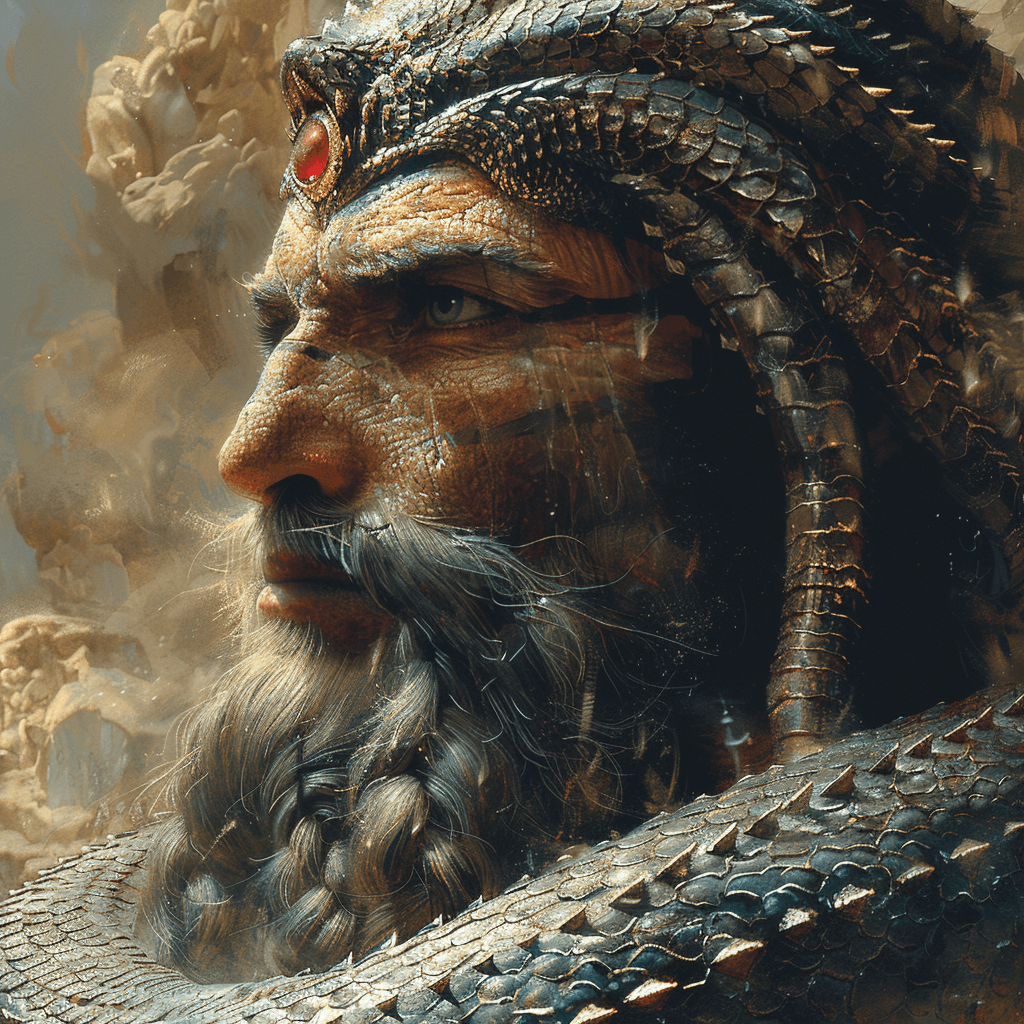
Tyrannical ruler in Persian mythology, with serpents growing from his shoulders. Defeated by the hero Fereydun.
Greek-mythology

Amphiaraus was a king of Argos in Greek mythology, who reigned alongside Iphis and Adrastus, brother of his wife Eriphyle. He was the son of Oecles and Hypermnestra. He participated in the hunt of the Calydonian Boar, and he was also an oracle. He was one of the main characters in the myth of the Seven Against Thebes. His wife Eriphyle was bribed by Polynices with the necklace of Harmonia, and she managed to convince her husband to participate in the war, although it was doomed to fail. Although he accepted, Amphiaraus was aware of his wife’s ploy and asked his children Alcmaeon and Amphilochus to kill their mother if he was slain in the battlefield. During the battle, he killed Melanippus, but he was attacked by Periclymenus, son of Poseidon. Trying to flee, Amphiaraus was swallowed by the earth when Zeus threw a thunderbolt and split it in half. Afterwards, Alcmaeon killed his mother as he had promised his father, but was pursued by the Erinyes for committing matricide.
Slavic-mythology
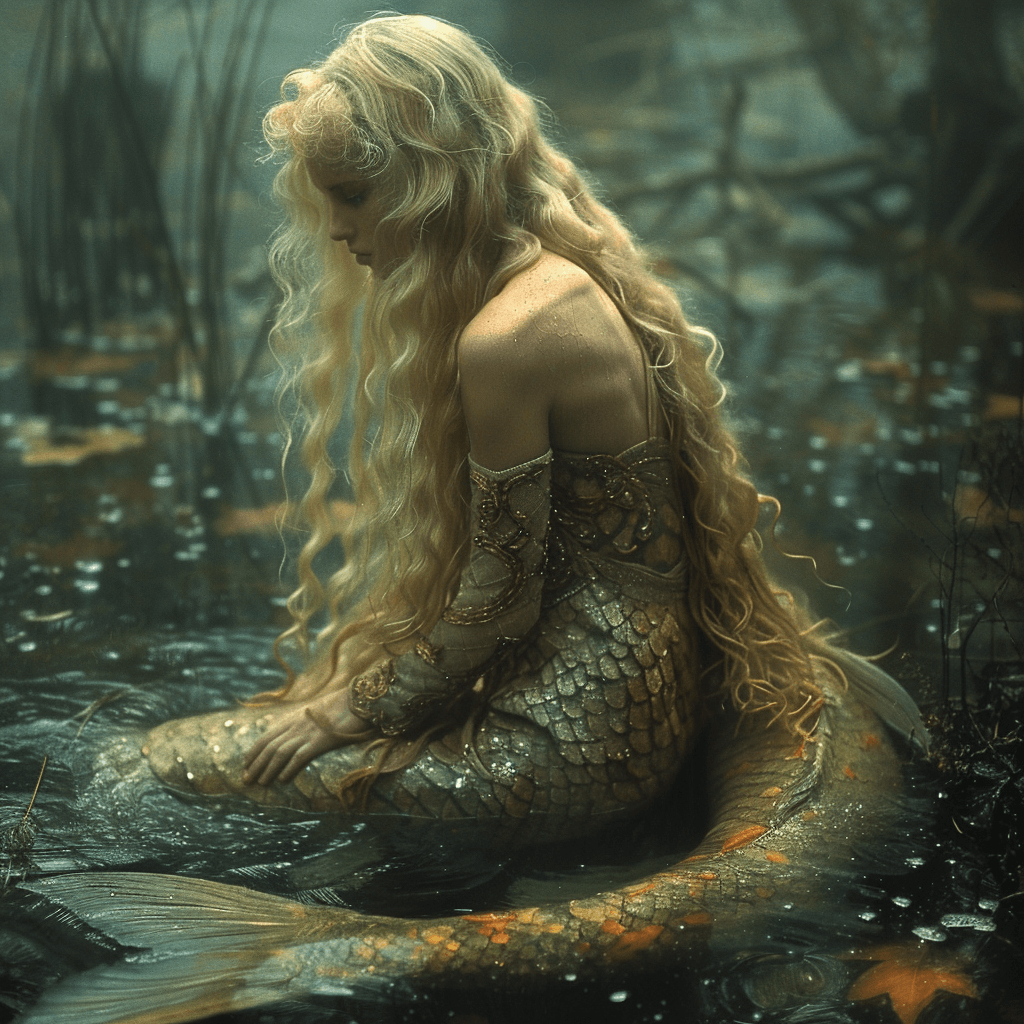
A water nymph or mermaid in Slavic folklore, often associated with bodies of water and known for their enchanting songs.
Greek-Mythology

Tyr, Odin's son with the daughter 2 of the Giant Hymir, is bold and courageous; men call upon him in battle, and he gives them courage and heroism. Therefore Tyr is the true god of war; he takes pleasure in bringing about strife, and he does nothing whatever for the promotion of concord. Captains and princes are designated after him, Kinsmen of Tyr. No small number of places in the North (mostly in Denmark) commemorate his name; and yet, few traditions connected with him have survived. He has but one hand; the other was bitten off by the Fenris Wolf.
Hittite-Mythology
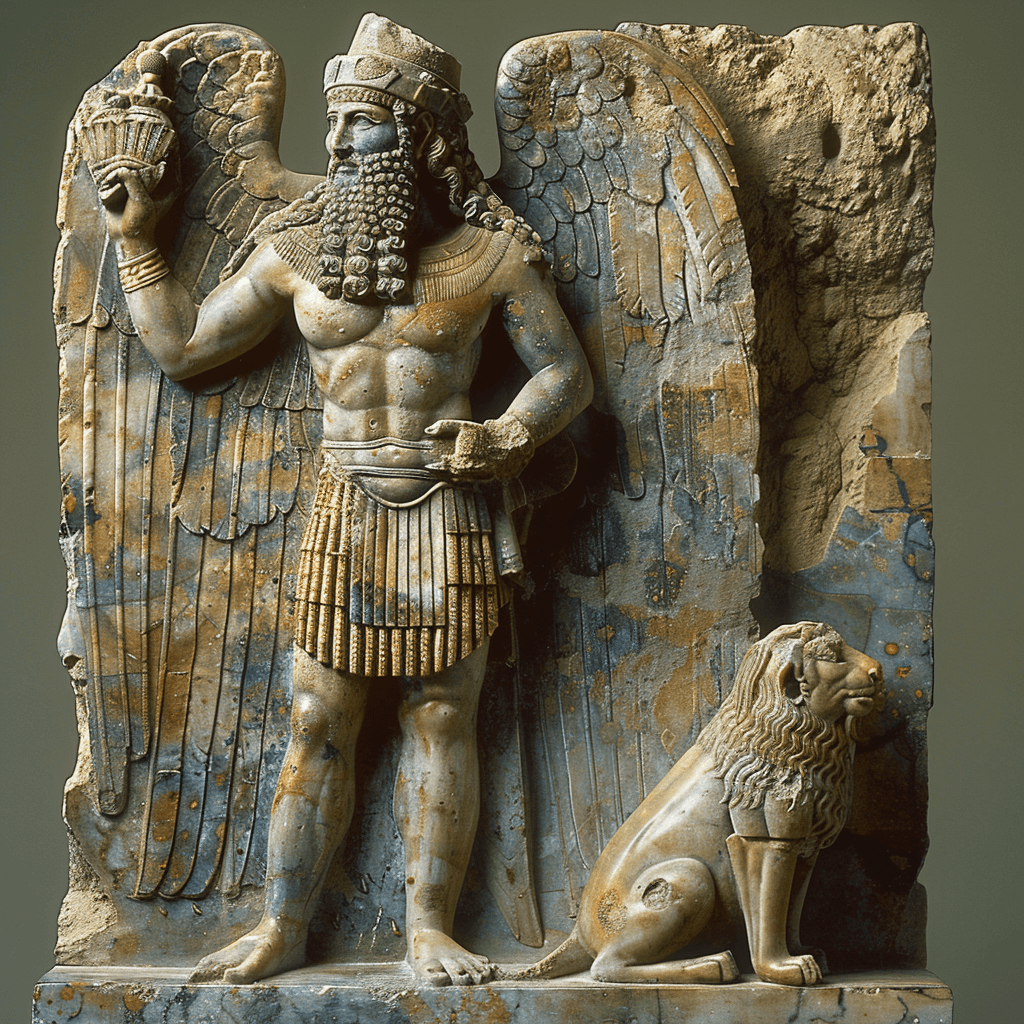
Hahhimas is the Hittite god of wisdom and magic, revered for his knowledge and mystical powers. He is often invoked for guidance and protection.
Hittite-Mythology
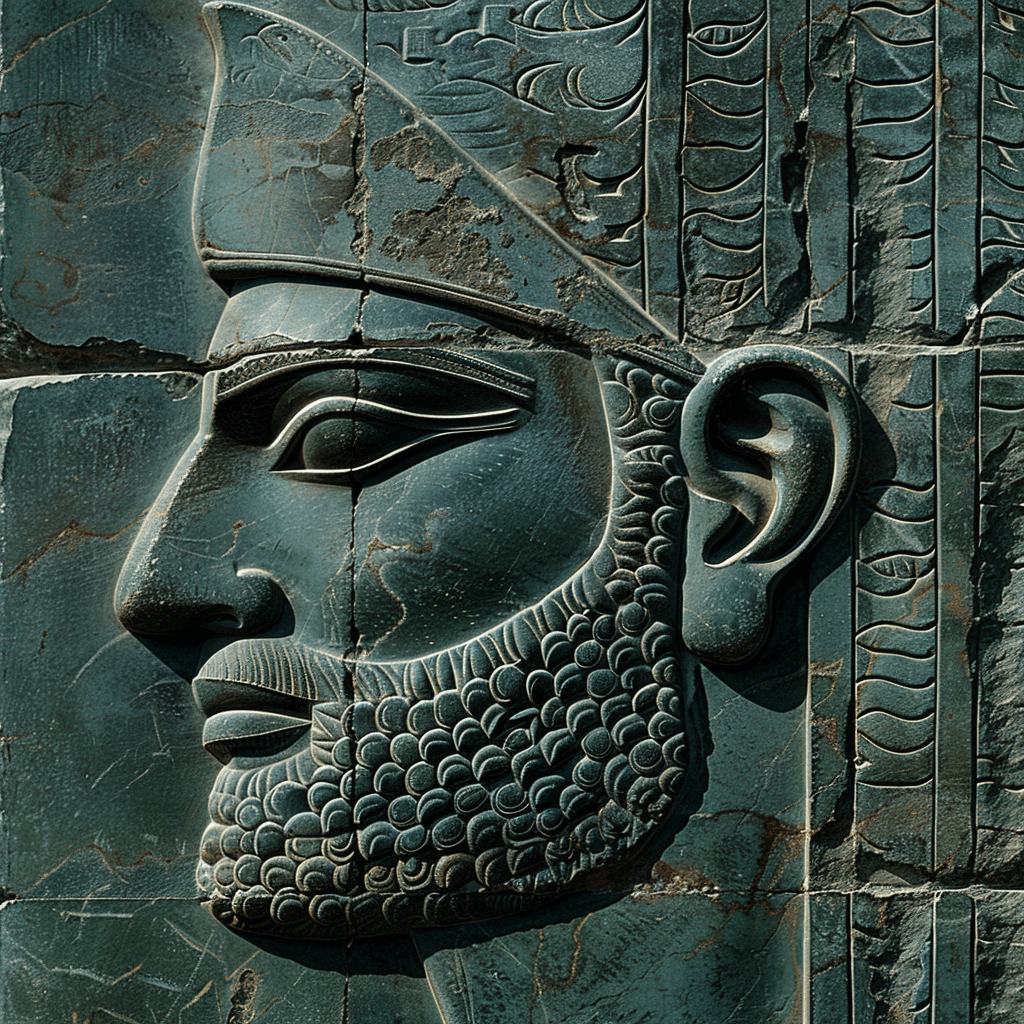
Allanzu is the Hittite god of the underworld, ruling over the realm of the dead. He is often depicted as a fearsome figure presiding over the afterlife.
Roman-Mythology

Son of Zeus and a mortal woman, renowned for his strength and celebrated in many adventures. Completed the Twelve Labors.
Greek-mythology

Lycurgus was the quasi-legendary lawgiver of Sparta who established the military-oriented reformation of Spartan society in accordance with the Oracle of Apollo at Delphi.
Greek-mythology
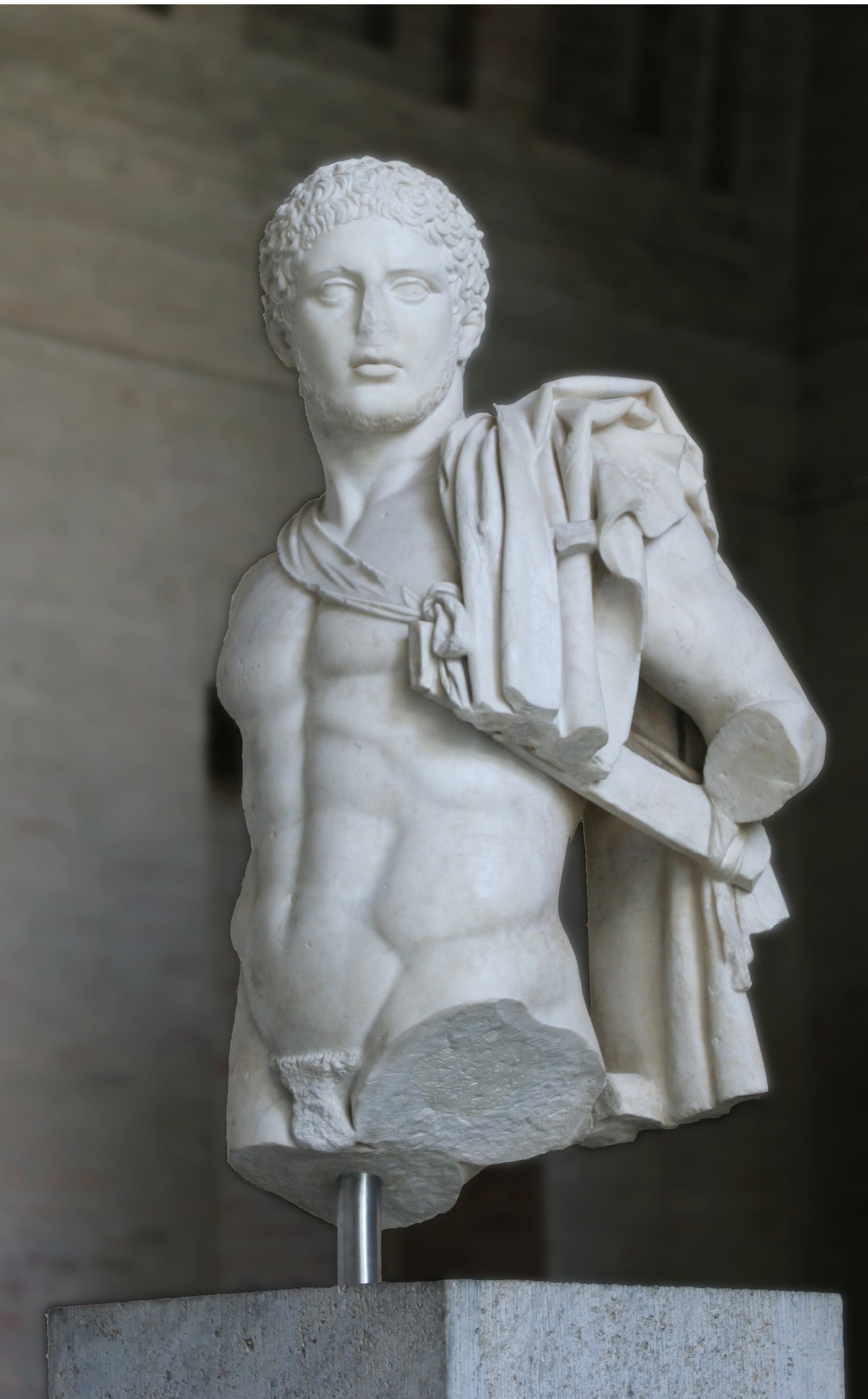
Diomedes was the commander of 80 Argive ships and one of the most respected leaders in the Trojan War. His famous exploits include the wounding of Aphrodite, the slaughter of Rhesus and his Thracians, and seizure of the Trojan Palladium, the sacred image of the goddess Pallas Athena that protected Troy.
greek-mythology
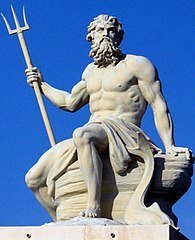
In Greek mythology, Abderus or Abderos was a divine hero, reputed by some to be one of Heracles' lovers (eromenoi), and reputedly a son of Hermes by some accounts, and eponym of Abdera, Thrace.
Etruscan-mythology
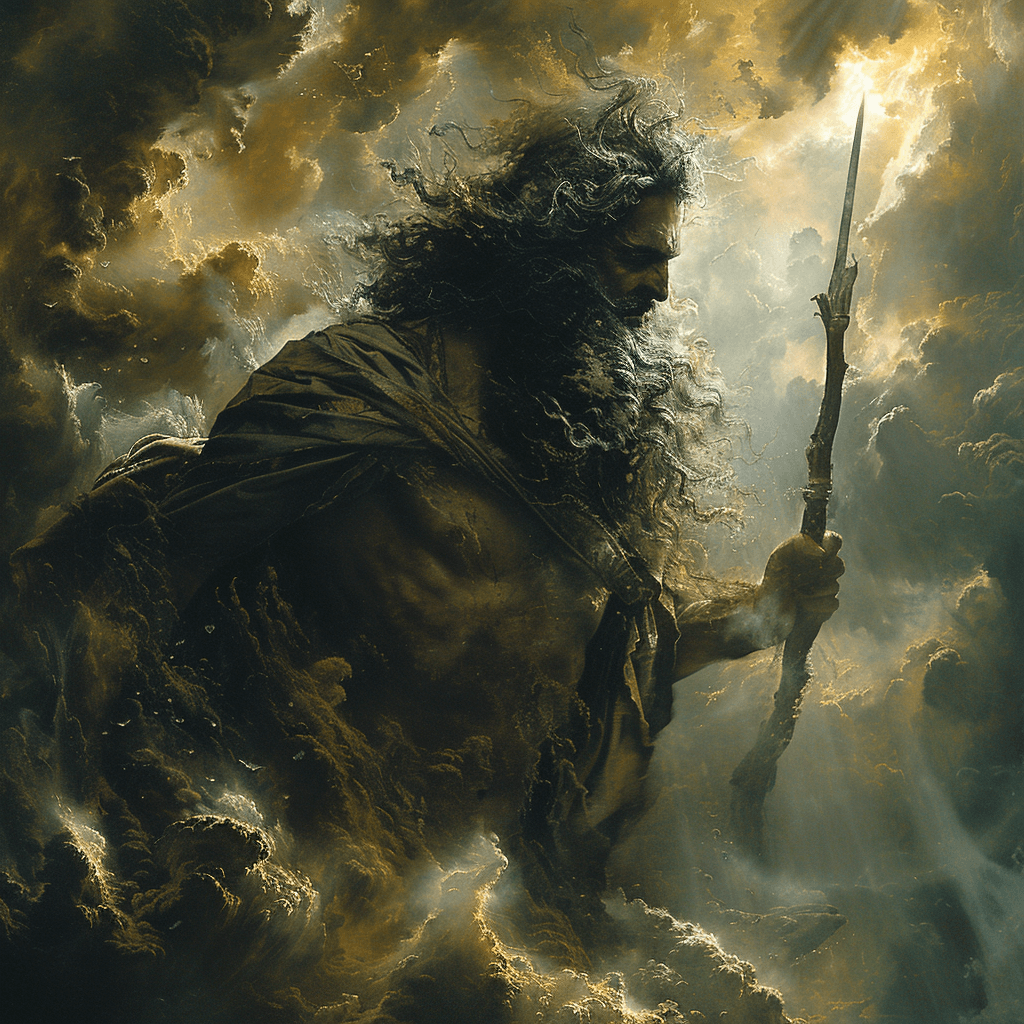
A malevolent deity associated with chaos and destruction, often depicted as a monstrous figure.
Movies inspired by Mythology
Uncovering the truth will unleash a nightmare

In 1923, legendary film Director Cecil B. DeMille finished the epic film, The Ten Commandments (1923). After filming was completed, he bulldozed the sets into the Guadalupe Sand Dunes of the central California coast. His reasons for doing so were very mysterious. This story gives a fictional explanation as to why he did it. There was a legitimate Egyptian artifact amongst the props, but they didn't know which one was trapping the spirit of an Egyptian avenging god. Mysterious murders and accidents while making the film brings things back to the surface today, and it starts all over again. Written by anonymous In 1923, legendary film Director Cecil B. DeMille finished the epic film, The Ten Commandments (1923). After filming was completed, he bulldozed the sets into the Guadalupe Sand Dunes of the...
An Epic Journey of Adventure and Discovery

The warrior King Odysseus leaves his idyllic life in the kingdom of Ithaca to fight in the Trojan War. After winning the war, he now must endure a lengthy, ten-year journey to return, and with all his wits, Odysseus must overcome deadly monsters, powerful forces of nature, seductive enchantresses, and even journey into the bowels of the Underworld. Season: 1 Year: 1997
An Epic Tale of Love and Magic

Mayabazar (1957) is a classic Indian fantasy film directed by Kadiri Venkata Reddy. The film is based on the folk tale of Bhakta Prahlada and is set in the backdrop of a traditional village. It stars N.T. Rama Rao, A.N.R, Savitri, and S.V. Ranga Rao in the lead roles. The story revolves around Ghatotkacha (N.T. Rama Rao) and his father, King Hiranyakashyapu (S.V. Ranga Rao). Ghatotkacha, a demon son of the King, is in love with the princess of the Mayabazar (Savitri). However, the King wants his daughter to marry a human prince. Ghatotkacha's only hope is to obtain the magical parijat flower from Lord Vishnu, who is in disguise as a saint. With the help of Lord Vishnu, Ghatotkacha manages to save the princess and their love is eventually accepted by the King. The film is known for its iconic song "Koluvaiyunu Kalla Regindi" and its highly imaginative visual effects. It was one of the first South Indian films to use special effects and its innovative use of colour established it as a classic in Indian cinema.
The path is unsafe. The place is unknown. The journey is unbelievable.
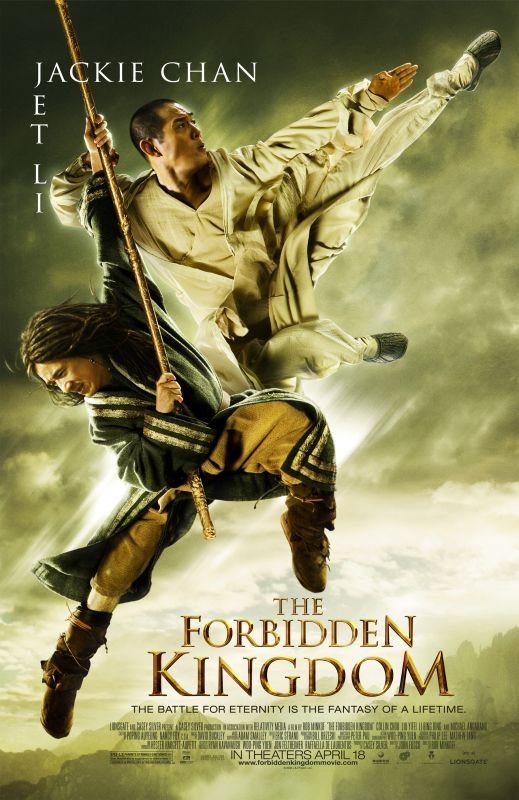
An American teenager who is obsessed with Hong Kong cinema and kung-fu classics makes an extraordinary discovery in a Chinatown pawnshop: the legendary stick weapon of the Chinese sage and warrior, the Monkey King. With the lost relic in hand, the teenager unexpectedly finds himself traveling back to ancient China to join a crew of warriors from martial arts lore on a dangerous quest to free the imprisoned Monkey King. Written by Anonymous A discovery made by a kung fu obsessed American teen sends him on an adventure to China, where he joins up with a band of martial arts warriors in order to free the imprisoned Monkey King.
Where there are gods there are monsters.
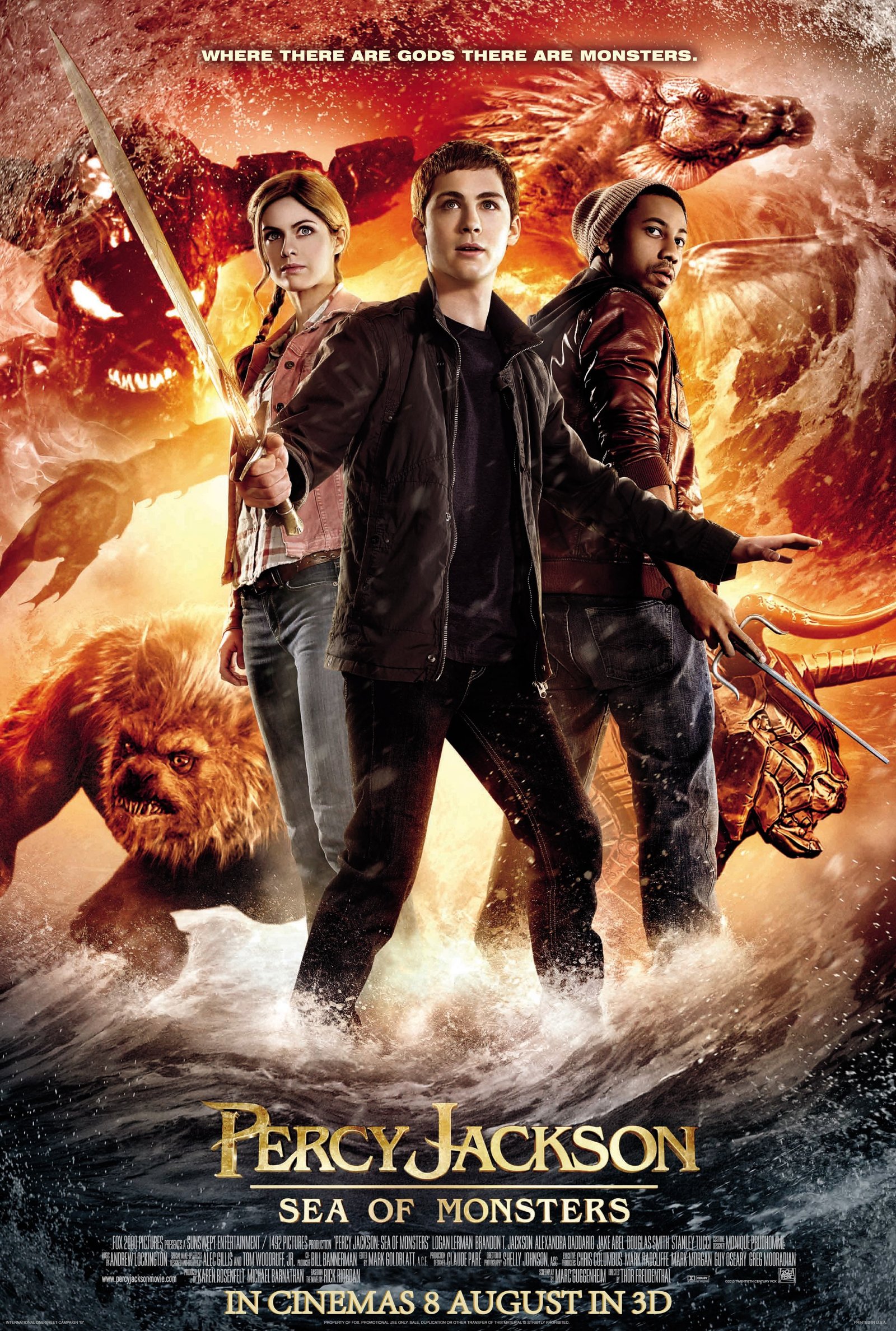
In this retelling of Rick Riordans book, "The Sea of Monsters", Percy Jackson, accompanied by his friends Annabeth Chase, Clarisse La Rue and Tyson, his half brother, goes on a journey to the Sea of Monsters to retrieve the Golden Fleece and save Camp Half-Blood. Written by Michelle Stone In order to restore their dying safe haven, the son of Poseidon and his friends embark on a quest to the Sea of Monsters, to find the mythical Golden Fleece, all the while trying to stop an...
